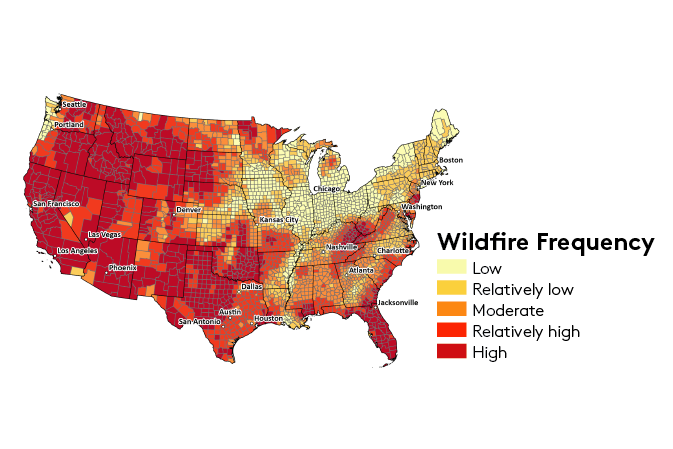Study finds Americans aren't deterred from moving to areas with high risk of wildfires
Local data also shows that fire risk zones have seen an increase in population.
A new study found that nationwide, the risk of wildfire doesn't seem to be deterring people from moving to a new place.
The study, released on Dec. 8 out of the University of Vermont, looked at migration and population data from 2010 to 2020 combined with some socioeconomic and environmental factors.
It showed a national trend of people moving away from areas prone to heat waves and hurricanes but into areas prone to wildfires.
"A lot of Americans like living out where they have a little bit more access to nature, where they have a little bit more space, a backyard, or they're out in the trees...So you might find people moving to those areas where they're kind of more at risk," said Mahalia Clark, a University of Vermont environmental scientist and one of the authors of the study.
But there is not a clear reason for this trend.
Clark said deciding where to live is a personal and complex decision that involves a lot of factors: job opportunities, family, culture, climate and landscape just to name a few.
"It might be that people are kind of moving towards areas that are more affordable. And in some cases it might be that those areas are out in your wildland-urban interface where people are more risk of wildfires," said Clark.
Of course, even their data shows many California counties have seen more people leaving than arriving. But even those who leave California might end up moving to states like Arizona, Idaho or Montana, which also have high fire danger.
This map shows wildfire frequency in each county in the United States. It was created by researchers at the University of Vermont for the study "Flocking to Fire."
In Southern California, an ABC7 analysis of Census and state-classified wildfire severity zones shows an increase in population in some high wildfire risk areas.
The most pronounced areas are Orange County and Riverside County.
In Orange County, census tracts that don't overlap with any fire hazard zones saw a population growth of 4.2% between 2010 and 2020. But in moderate, high, and very high fire severity zones, the population grew 26%, 14% and 10%, respectively.
In Riverside County, the population grew about 6% in areas outside of fire hazard zones, but 20%, 13% and 16% in tracts that overlap with moderate, high or very high fire severity zones.
Click here to open in a new window
But, despite the nationwide hypothesis of people moving to cheaper areas, these local areas are not necessarily cheaper.
The median household income in areas outside of fire hazard zones in Orange County, for example, is about $89,000. In all other areas, it's more than $100,000.
Click here to open in a new window
Clark understands there are many reasons for why people move somewhere, but she said she hopes people understand the dangers of living in fire prone areas.
"I think it's important for individuals to really start thinking about how exposed they are to these risks and think about how those risks are only going to get worse as climate change continues, and I think it might also be important for policymakers and planners to start thinking about potentially discouraging and disincentivizing some increased development in some of the highest risk areas," she said.
Click here to open in a new window










